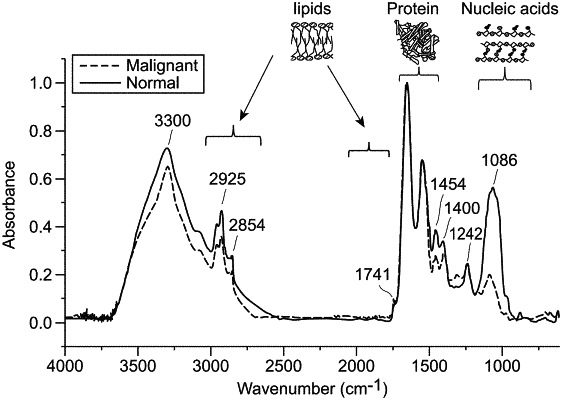| CPC G01N 33/57449 (2013.01) [A61K 45/06 (2013.01); G01N 21/6486 (2013.01); G01N 2021/3595 (2013.01)] | 18 Claims |

|
1. A method for determining the presence of one or more cancer biomarkers in a sample, the method comprising:
obtaining a biological sample comprising extracellular vesicles from a patient suspected of having cancer;
dispersing intact extracellular vesicles on a substrate;
recording mid-infrared spectra with single-vesicle resolution of individual cancer-derived extracellular vesicles, or individual subpopulations of cancer-derived extracellular vesicles in the biological sample to determine if a cancer biomarker is present; using mid-infrared vibrational spectroscopy performed with a narrow-band mid-infrared light source or a broadband mid-infrared light source, selected from a (i) synchrotron source including synchrotron infrared nanospectroscopy (SINS) and (ii) atomic force microscope Fourier transform infrared (AFM-FTIR) spectrometer.
|